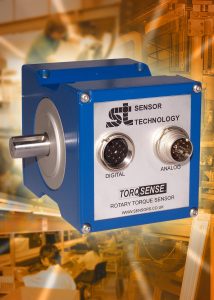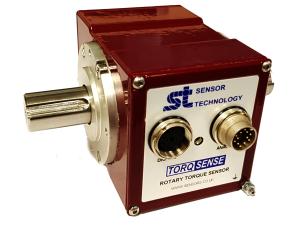Available in other languages:
![]()
![]()
![]()
![]()
Measuring torque accurately, particularly in rotating shafts, can often be challenging, but new technology is providing a better solution, says Mark Ingham of Sensor Technology.
Accurate torque measurement is essential for the development of a huge variety of products, ranging from sub-sea turbines for tidal energy systems and novel motors for use in electric vehicles to animal hair clippers and thermostatic radiator valves. To satisfy this need, many methods of torque measurement have been developed, the vast majority of which actually measure the strain produced by the torque in a mechanical element such as a drive shaft, and use this measurement to calculate the torque the element is experiencing.
Traditional approaches to strain measurement have included optical methods, such as Moiré and laser techniques, and a variety of electrical methods, including capacitive, inductive, piezoelectric and resistive techniques. Many of these methods are, however, expensive or inconvenient for use outside of a laboratory. Sensing using resistive strain gauges is an exception and, for this reason, it is widely used.
Despite their benefits, resistive strain gauges are, however, not an ideal solution for two main reasons.
The first is that the changes in resistance that reflect the strain applied to the gauge are very small, which makes accurate measurement difficult and leaves the measuring system vulnerable to errors produced by noise.
The other problem is that it is difficult to make electrical connections to a strain gauge fitted to a moving element of the product under test. This limitation can be overcome by, for example, the use of slip rings or some form of transformer-based inductive coupling, but these methods are both costly and inconvenient. This is a serious limitation as, in many applications, the principal requirement is to measure the torque in a shaft while it is rotating, often at high speed.
 The shortcomings of conventional methods of torque measurement have led to the development of an entirely new technology based on surface acoustic wave (SAW) transducers. These essentially comprise two thin metal electrodes, in the form of interlocking fingers, on a piezoelectric substrate such as quartz. When a radio-frequency signal of the correct frequency is applied to such a transducer, surface acoustic waves are set up and it behaves as a resonant circuit.
The shortcomings of conventional methods of torque measurement have led to the development of an entirely new technology based on surface acoustic wave (SAW) transducers. These essentially comprise two thin metal electrodes, in the form of interlocking fingers, on a piezoelectric substrate such as quartz. When a radio-frequency signal of the correct frequency is applied to such a transducer, surface acoustic waves are set up and it behaves as a resonant circuit.
The key feature, however, is that when the substrate is deformed, the resonant frequency changes. If the transducer is attached to a drive shaft, the deformation of the substrate and hence the change in resonant frequency will be related to the torque applied to the shaft. In other words, the transducer, in effect, becomes a frequency-dependent strain gauge.
Since SAW transducers operate at radio frequencies, it is easy to couple signals to them wirelessly. This means torque sensors that incorporate the SAW transducer technology are well suited for use on rotating shafts and other moving elements, and can provide data continuously without the need for the inherently unreliable brushes and slip rings that are often found in traditional torque measurement systems.
SAW transducer technology, which is covered by patents, has allowed the development of a new type of torque transducer that offers many benefits. These include short shaft length, which means high shaft stiffness; low inertia and high operating speed capability, as the electronics are not fixed to the shaft; high accuracy and resolution; excellent noise immunity and a generous overload withstand capability.
The new sensors are capable of delivering results in real time, and are currently available in standard versions that, between them, are capable of accurately measuring torque from 1 Nm to 13,000 Nm. Versions with even higher torque capabilities can be produced to meet special requirements.
While SAW torque transducers are a relatively recent development, they have been in use long enough, and in a sufficiently diverse range of applications, for their convenience and reliability to be well proven, even in challenging operating conditions. Users have, in particular, reported that the accuracy of the results delivered by the sensors is an important benefit, as is the availability of those results in real time, which means that the effects of modifications made to the equipment under test can be seen instantly.
At the present time, there is an upsurge in interest in new product development, driven by the quest for greater energy efficiency, and for companies to enhance their competitive position by innovating in their market. In many cases, that development work involves torque measurement and, as we have seen, this is now easier and more convenient than ever before, thanks to the introduction non-contact torque transducers based on SAW technology.





